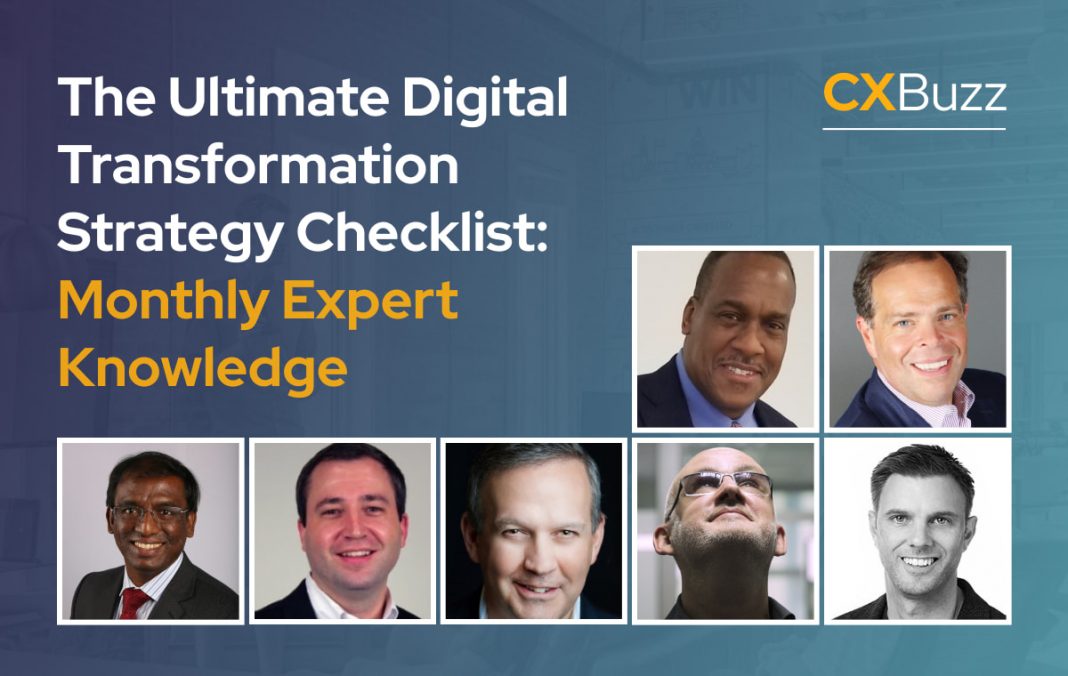The COVID-19 pandemic has caused significant disruption across most industries and it requires little understanding to see as to how businesses have had to rethink their key focus-strategies to survive. Among a few other areas, the field of digital transformation strategy is one in which businesses have started investing heavily. Overall, we’ve seen a widespread acceleration in the digital transformation journey of many companies.
The reason for such a massive shift is that technology can offer a feasible solution for businesses to make it through the ongoing COVID-19 crisis. Considering digital transformation as a “trend to watch” will undeniably be an underestimation; we are referring to a necessity rather than a trend. Digital transformation has become a key survival mechanism, preparing the sectors to meet the demanding landscape with rising expectations of the customers and cut-throat competition.
While speaking of digital transformation may seem extremely intellectual and cool at the same time, implementing it through the organization and business to yield the desired impact could be a little difficult task. Some of the high-end technologies and innovations are still in the testing phase and a few have already proven their worth.
However, the real deal lies in ensuring that the technological solution you are believing to be right for your business is good for it. Especially the small-scale businesses or the ones who have recently joined the league of online presence need to get their digital transformation strategy right. Even the ones who initiated the transition long before COVID-19 struck, have to re-analyze their strategy for going digital.
So, is there a way to ensure that your digital transformation strategy is taking you to the right destination? Well, they say that experience plus expertise never goes wrong. Here at CXBuzz, we have gathered some of the best advice from industry leaders on their Ultimate Digital Transformation Strategy Checklist for you to make sure you are setting the foot on the right path in the right direction.
Leveraging The Data
It is a well-known fact that data in the present time holds the position of an invaluable asset. If any organization is looking for ways to undergo a digital make-over, insights provided by data could be of real value.
Mahesh Vinayagam, CEO at qBotica, says:
“The ultimate checklist for any digital transformation strategy is to ensure that the enterprise has a frictionless ability to have the right data available at the right place, right time, at the right speed with the right person. It’s easier said than done, it requires removing friction caused by manual intensive tasks, human decision making, and disparate data & systems across the enterprise.”
True to the core: Digitalization is something that requires a clear and smooth path of adoption to serve the business better and in expected ways. While difficult to achieve, digital transformation could be the game-changer for your business. However, the question here is: where to begin from?
A Structure With a Solid Foundation
Having a solid foundation is the key to not only running a successful business, but also to implement changes and evolve with innovative strategies. With the fundamentals right on track, you can motivate your business to develop the infrastructures that may help it in achieving the desired transformation.
Zack Hamilton, Global Solution Principal-Retail Experience at Medallia, talks about the foundational principles that are must to build a strong digital transformation strategy:
“I am fortunate to work with some of the most innovative retail brands across the world. They all have a few foundational principles that have helped them accelerate their digital transformation strategy: Foundational belief in acting on customer feedback & signals to optimize and innovate, strong Executive Sponsorship/Leadership, active cross-functional team inspired to build experiences, and a culture that is based on ‘fail fast.’”
While we cannot deny the significance of having foundational principles, it is equally important to build an architecture that complements the growth of the enterprise.
James Kerr from Indispensable Consulting emphasizes the importance of IT infrastructure, without which there are high chances of not implementing the digital transformation strategy perfectly:
“Besides the obvious items like securing executive sponsorship, funding, and determining the business priorities in a way to provide proof of concepts as you go along, you really should build a solid IT architecture plan that can accommodate the needed technologies and systems required to digitally transform the business.”
Kerr further stresses that having an IT architecture as a workflow element allows a seamless execution of the processes that form the backbone of digitalization:
“We, at Indispensable Consulting, defines IT architecture as the work processes that you perform in your business, the information needed to support the execution of your processes, the applications required to manipulate and manage the information and the technology platforms (including hand-held devices, laptops, desktops, servers, and the cloud) required to run the applications. These 4 dimensions – business processes, information, applications, and technology platforms – form the backbone of your digitalization investment.
In order to drive digitalization, you must invest across these four dimensions and ensure that they seamlessly integrate into a comprehensive whole that underpins your business.”
Less Is More
It is also important to keep things simple enough to understand. Technology undoubtedly has the power to attract anyone, but it should not make the dynamics too complicated, explains Robert Pender, the Founder of Experience Activists:
“Less is more. Keep it simple. Do a few things to an exceptionally high standard. Above anything else, remember there’s a human at the end of your products and services.
Strive to ensure digital interactions do their utmost to replicate the same emotions and feelings if the encounter was a face-to-face human one.
Do not be seduced by all the technology that exists. Just because you can do something, doesn’t mean you should. Think long and hard about the impact tech has to customers and employees. It must remove friction, not compound it,” says Robert Pender.
When it comes to technology, the general opinion is that the more there is, the better it is. However, we forget that technology should make our lives simpler and not add unneeded complications. The same goes for businesses: The transformation should aim to simplify the growth of the company.
Modernization vs. Real Transformation
One curious thing to note here is that oftentimes, equipping modern solutions is taken as digital transformation. However, is it the actual transformation for which the organization strives so hard to achieve? Let’s understand what actual transformation stands for from Aaron Spinley and Alex Sharpe.
Spinley, SVP Australia and New Zealand at Thunderhead, says:
“There are 3 primary pillars for digital transformation, of any kind.
Culture. Culture. And culture.
An awful lot of organizations never get anywhere near transformation, despite the rhetoric. Most of them simply modernize a transaction layer or a process. The best way to think about it is like going from horse and cart to car, or from a bunch of outbound order takers to online commerce. This is just stepping through technological advancement, without genuine model change.
But actual transformation is much more than that. It is much more about bone-deep, operating model, and business model change. And that requires real leadership and cultural readiness.
As a consequence, organizations need to enable people to “see” alternative futures, foster excitement about that, and enable that sense of contribution or ownership of the mission. But this is almost always missing, and as a result genuine transformation rarely occurs. The management guru Michael Hammer, who was mostly interested in technology project successes, introduced this formula:
OO + NT = EOO (Old Organisation + New Technology = Expensive Old Organisation).
I am less interested in the success of the tech project directly, but more in the cultural inputs that help make it successful, and then sustain the change. So we are aiming for (my formula):
NO + NT = TO (New Organisation + New Technology = Transformed Organisation).
The other aspect to keep in mind is that cultural change is often required in external stakeholders as well. So one of the big things we look to do at Thunderhead is to think structurally about the way customers are nudged toward a changed engagement.”
Similar thoughts are shared by the founder of Sharpe Management Consulting, Alex Sharpe. The cultural aspect of a business is one of the most fundamental and yet the hardest part that needs the flexibility to transform. Sharpe also stresses the role of the historical background of the enterprise.
“It comes down to the way the organization is wired. History tells me organizations that succeed embrace three themes:
It is not about technology. Technology provides an opportunity. The key is to unlock the value by penetrating new markets, creating new offerings, and increasing productivity.
They undertake a series of ‘experiments’ to learn and discover. Big bang and swinging for the fences do not work, especially without going through a discovery phase while instilling a learning culture.
They have the will to fundamentally change the business model and its culture. Culture being the hardest part. Metrics, benchmarks, compensation plans, financial reporting, everything must be on the table. Not to say everything has to change, especially not all at once. It does need to be looked at and considered to incent the desired behavior.
I have been known to say, it is like changing a car tire while the car is moving at 60 mph.”
What’s Next?
The future certainly belongs to those who understand the key to revolution and evolution is digital savviness. Post COVID-19, many things may have changed, but for times to come, the focus should be on easy-to-use digital capabilities, explains Artificial Intelligence Thought Leader Tony Rhem:
“I believe that digital savviness will be at the heart of any brand’s digital transformation strategy for this year and beyond. Whether you are a B2C or B2B; selling a service or a product a sound digital transformation strategy is essential. This strategy must bring ease-of-use digital capabilities to sell to your customer and allow your employees to work anywhere and anytime to complete their jobs and seamlessly deliver the company’s product and/or service.”
In Conclusion
Digital transformation does not solely require the mere adoption of new technical innovations or evolving on the technological front only. In fact, in order to achieve meaningful digitalization, it is crucial to remove internal and external friction, have a strong foundation on which the IT structure can be built, utilize all the assets and resources of the company, and lastly aim to spark a cultural shift. With these points, your checklist for ultimate digital transformation strategy is complete and ready for implementation.






